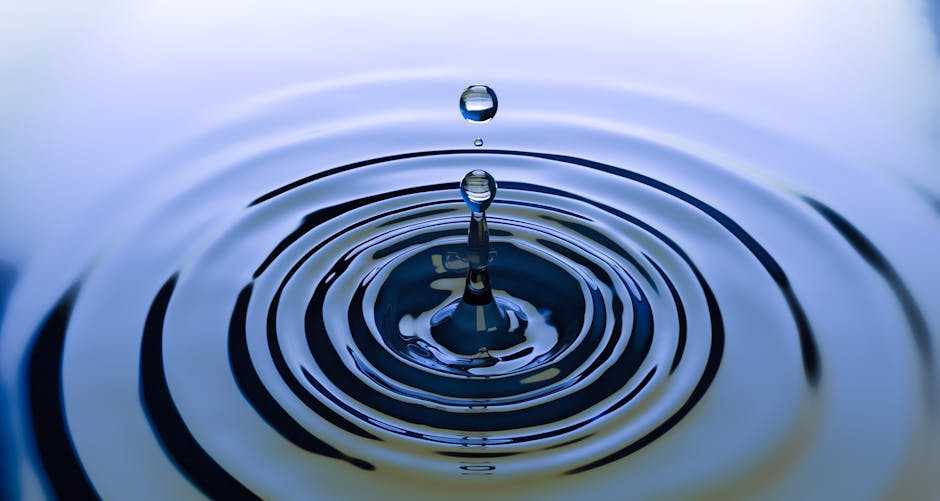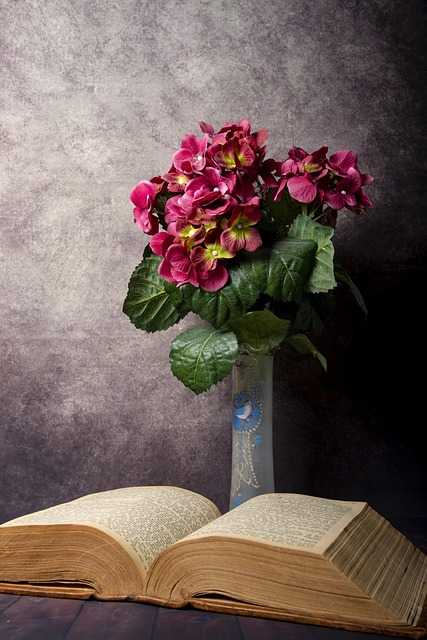Table of Contents
- Exploring the Evolution of Modern Art Photography
- The Impact of Technology on Contemporary Photographic Techniques
- Understanding the Emotional Language of Modern Art Photography
- Curating Your Collection: Tips for Emerging Art Photographers
- Navigating Trends: What to Watch for in the Future of Modern Art Photography
- Q&A
- The Conclusion
Exploring the Evolution of Modern Art Photography
The transformation of art photography over the decades has mirrored the broader evolution of artistic expression itself. Initially rooted in realism, photography was often viewed merely as a tool for documentation. However, the advent of modernism saw a shift towards abstraction and conceptualism, emphasizing content beyond the image. Pioneering artists began experimenting with lighting, composition, and materials, all of which contributed to the rich tapestry of what we now consider modern art photography. Key characteristics of this evolution include:
- Abstraction: Moving away from literal representation to evoke emotions and concepts.
- Mixed Media: Integrating various materials and techniques, blending photographic elements with painting and installations.
- Postmodernism: Challenging traditional narratives and authority, allowing for a diverse range of voices and perspectives.
As technology advanced, so too did the possibilities for artists. The introduction of digital photography revolutionized the medium, offering new avenues for creativity and expression. Artists began to manipulate images with software, exploring the boundaries of reality and fantasy. This digital age has birthed a unique genre that questions authenticity and pushes the limits of imagination. The following table illustrates some pivotal milestones in the journey of modern art photography:
| Year | Milestone | Impact on Art Photography |
|---|---|---|
| 1920s | Introduction of Surrealism | Focus on dreamlike and bizarre imagery. |
| 1960s | Conceptual Art Movement | Shift towards ideas and concepts over aesthetic. |
| 1990s | Digital Photography Emergence | Revolutionized accessibility and techniques. |
Today, the landscape of modern art photography is vast and varied, encapsulating a multitude of styles and philosophies. Artists push the boundaries even further with innovative strategies, such as incorporating social commentary and interdisciplinary approaches. This not only expands the definition of photography but also engages the viewer in an ongoing dialogue about the role of the medium within contemporary art. The evolution of modern art photography is a testament to the relentless spirit of experimentation, forever challenging what art can be.


The Impact of Technology on Contemporary Photographic Techniques
The evolution of contemporary photographic techniques is intricately linked to advancements in technology, enabling artists to explore new realms of creativity. High-resolution digital cameras and sophisticated editing software have transformed the way photographs are created and presented. Photographers no longer rely solely on traditional methods; instead, they incorporate tools such as HDR imaging, which allows for a dynamic range of brightness levels, or drone photography, granting unique aerial perspectives that were once unthinkable.
Moreover, the integration of artificial intelligence (AI) in photography has ushered in a new era of creative possibilities. AI-driven software can analyze and enhance images, suggest composition improvements, or even generate art by learning from vast datasets. This technology allows photographers to push boundaries, balancing their artistic vision with machine-assisted optimization. Notably, the following techniques have gained prominence:
- Post-processing Magic: Digital editing programs like Adobe Photoshop and Lightroom allow intricate manipulation of images, from color correction to the addition of surreal elements.
- Virtual Reality (VR): Photographers can now create immersive experiences, inviting viewers to step inside their worlds through 360-degree imagery.
- Social Media Integration: Platforms like Instagram have revolutionized how images are shared and received, influencing trends and styles in real-time.
Further emphasizing this technological evolution, the following table highlights some contemporary photographic techniques and their unique advantages:
| Technique | Advantages |
|---|---|
| HDR Imaging | Captures a wider range of luminosity, enhancing fine details in shadows and highlights. |
| Drone Photography | Offers unprecedented aerial views for more dynamic and captivating compositions. |
| AI-enhanced Editing | Streamlines workflows and enhances creativity with automated adjustments and suggestions. |


Understanding the Emotional Language of Modern Art Photography
Modern art photography serves as a poignant reflection of human emotions, often transcending the conventional boundaries of visual storytelling. Artists harness the inherent qualities of light, composition, and perspective to evoke feelings that resonate within the viewer’s soul. The imagery produced is not merely a representation of reality; it is an abstract interpretation that allows for personal reflection and emotional connection. By employing techniques such as high contrast, soft focus, and unexpected angles, photographers create a dialogue that challenges perceptions and ignites curiosity.
Central to understanding emotional language in this medium is the concept of subjectivity. Each photograph encapsulates a moment perceived through the artist’s lens. For instance, the use of color can dramatically influence the emotional tone of a piece. Warm hues might invoke feelings of comfort and nostalgia, while cooler tones can evoke melancholy or introspection. To illustrate this, consider the following attributes that impact emotional resonance:
| Color | Emotion |
|---|---|
| Red | Passion |
| Blue | Calmness |
| Yellow | Joy |
| Black | Sadness |
Moreover, modern art photography frequently embraces theme-based exploration. Topics such as identity, time, and societal challenges are portrayed not through explicit narratives but by capturing raw human experiences. This gives rise to an indelible connection between the viewer and the artwork. For example, a series that follows the daily rituals of individuals in a bustling city may elicit feelings of isolation amid the crowd. By distilling everyday experiences into striking visual narratives, photographers guide audiences to pause and reflect on their personal journeys. This engagement ultimately transforms passive viewing into an active exploration of emotions.


Curating Your Collection: Tips for Emerging Art Photographers
As an emerging art photographer, building a distinctive collection of your work is essential to establishing your voice and visual identity. One effective strategy is to explore themes that resonate with your personal experiences or societal influences. This can involve narrowing your focus to specific subjects—such as urban landscapes, human emotions, or abstract forms—that captivate both you and your audience. By delving deeply into these subjects, you can create a cohesive body of work that not only showcases your evolving technique but also tells a compelling visual story.
When curating your collection, consider the presentation and organization of your photographs. Think about how color palettes, styles, and techniques interact within your works. Utilize coherent formatting across your portfolio to enhance the viewer’s engagement. Whether you’re creating a physical portfolio, an online gallery, or social media posts, consistency is key. Some tips to maintain uniformity include:
- Establishing a signature editing style that you apply to all your images.
- Using similar framing and composition techniques across your collection.
- Creating thematic groupings that link various series or subjects together.
Feedback is invaluable in the development of your artistic journey. Share your collection with peers, mentors, and potential collectors to gather insights. Joining online communities or local art groups can provide diverse perspectives that enhance your understanding of how your work is perceived. Consider hosting small exhibitions or participating in art fairs to expose your photography to wider audiences. Engaging with others in the art community can not only lead to constructive criticism but also inspire you to pursue new creative directions, ultimately enriching your collection.


Navigating Trends: What to Watch for in the Future of Modern Art Photography
As the landscape of modern art photography continues to evolve, a few key trends are emerging that photographers and enthusiasts alike should keep an eye on. One notable trend is the increasing integration of technology into photographic practices. From advanced editing software to the use of AI tools for both inspiration and creation, photographers are harnessing these technologies to push the boundaries of their work. This trend invites a re-examination of the definition of artistry, as traditional techniques blend with digital innovations to create unique visual narratives.
Another significant movement is the growing emphasis on sustainability within the photography community. Photographers are increasingly conscious of their environmental impact, leading to more eco-friendly practices. This shift is reflected in the choice of materials, methods of production, and even the subjects being captured. A focus on nature, urban decay, and social justice themes is likely to dominate, drawing attention to urgent global issues while showcasing personal narratives that resonate with broader audiences. As a result, the genre not only becomes a vehicle for artistic expression but also a platform for activism.
Moreover, the role of social media continues to transform the way art is shared and consumed. Platforms like Instagram and TikTok are reshaping the visual landscape, allowing photographers to reach wider audiences than ever before. This accessibility opens new avenues for engagement and community building. As more artists participate in these platforms, expect to see an increase in collaborative projects and interactive installations, breaking down the barriers between artist and audience. The dynamic interplay between traditional gallery spaces and digital forums will create a rich tapestry of experiences for both creators and viewers.
Q&A
Q&A: Exploring Modern Art Photography
Q1: What is modern art photography? A1: Modern art photography represents a dynamic and innovative approach to visual storytelling. It transcends traditional boundaries, often embracing abstraction, conceptual themes, and unique compositions that challenge conventional perspectives. This genre seeks to express emotions, ideas, and stories through the lens, making the viewer reconsider their understanding of art and reality.Q2: How does modern art photography differ from classical photography? A2: While classical photography often emphasizes realism and accurate representation, modern art photography pushes the envelope by prioritizing artistic expression over literal documentation. It utilizes techniques such as manipulation, digital enhancement, and mixed media practices, allowing photographers to convey deeper narratives and evoke specific emotional responses.
Q3: What are some common themes found in modern art photography? A3: Common themes in modern art photography include identity, societal issues, nature, technology, and personal introspection. Many photographers focus on the impact of contemporary life, challenging viewers to reflect on themes such as consumerism, environmental concerns, and the human experience. These themes often provoke dialogue and may lead to varying interpretations.
Q4: Who are some notable modern art photographers? A4: There are numerous influential figures in the realm of modern art photography. Some notable names include Cindy Sherman, whose conceptual self-portraits explore identity and representation; Andreas Gursky, recognized for his large-format images that often comment on contemporary life; and Sophie Calle, whose work combines photography with narratives that delve into personal experiences. Each of these artists brings a unique perspective to the medium.
Q5: How can one get started in modern art photography? A5: Starting in modern art photography can be both exciting and rewarding. Here are a few steps to consider:
- Explore: Study the works of renowned modern art photographers to understand their styles and approaches.
- Experiment: Use your camera to experiment with different techniques, compositions, and subjects that inspire you.
- Reflect: Consider what themes resonate with you personally and think about how to translate these into visual art.
- Share: Join communities or platforms where you can share your work, receive feedback, and engage with like-minded individuals.
- Evolve: Photography is an evolving art form – stay curious, continuously learn, and allow your style to develop over time.
Q6: What role does technology play in modern art photography? A6: Technology plays a crucial role in modern art photography by providing innovative tools and platforms for creation and presentation. Digital cameras, editing software, and even smartphones have democratized photography, enabling artists to explore and experiment with their visions. Social media and online galleries further enhance visibility, allowing photographers to reach a global audience and engage in contemporary dialogues.
Q7: How can I appreciate modern art photography? A7: Appreciating modern art photography involves an open mind and a willingness to explore diverse interpretations. Take time to analyze the elements of a photograph—consider the composition, color palette, and textures. Reflect on what emotions or thoughts the piece evokes for you personally. Engaging with artists’ statements or background information can also enhance your understanding of their intentions and the context behind their work. By inviting curiosity and contemplation, modern art photography can not only deepen your appreciation for the genre but also inspire you in your creative journey.
